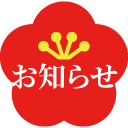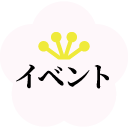What is Nagahama Bonbai Exhibition?
Bonbai refers to potted plums, or plum bonsai.
Potted plum trees bursting with white and pink blossoms fill Nagahama’s Keiunkan guesthouse every winter from early January to early March. The event is considered Japan’s premier exhibit of ume (Japanese plum) bonsai and has been held annually since 1952. Its yearly lineup often includes bonsai trees that are believed to be 400 years old.
Plum bonsai are smaller than free-growing trees, but they are quite large for bonsai; the biggest are almost 3 meters tall. Around 90 of the painstakingly cultivated trees are on display at any given time during the exhibit. They are selected from a collection of about 2,000 plum bonsai, including some 400 different varietals, and presented at peak bloom.
Keiunkan, a guesthouse built in 1887, and its adjacent Japanese garden are open year-round, except during mid-March and on the day immediately before the bonsai exhibition. On snowy evenings, the garden’s bamboo lanterns make for an especially memorable sight.




